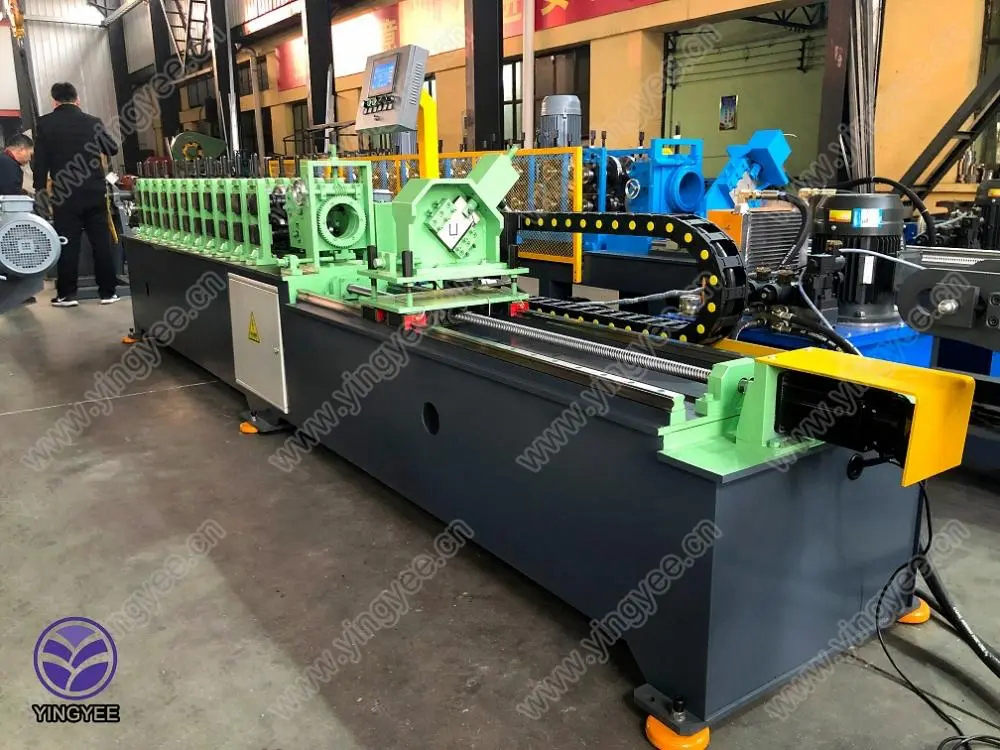
Carbon Steel Tube Mill An Overview of Processes and Applications
The carbon steel tube mill is an essential piece of equipment in the steel manufacturing industry, specifically designed for the production of carbon steel tubes. These tubes have diverse applications across various sectors, including construction, automotive, oil and gas, and manufacturing. The effectiveness and efficiency of the tube mill play a crucial role in meeting the increasing demands for high-quality steel products.
Understanding Carbon Steel
Before delving into the specifics of a carbon steel tube mill, it is important to understand what carbon steel is. Carbon steel is a type of steel wherein the main alloying constituent is carbon. Its properties, such as strength, ductility, and weldability, make it suitable for a wide range of applications. Carbon steel can be found in different grades, which define various levels of carbon content and other alloying elements. The primary grades include low carbon steel, medium carbon steel, and high carbon steel, each serving specific needs and applications.
Tube Mill Processes
A carbon steel tube mill operates through several key processes, which can be summarized as follows
1. Material Preparation The process begins with the preparation of steel strips or sheets, usually formed from hot-rolled or cold-rolled steel. These strips are then organized into coils before being fed into the mill.
2. Forming The steel strip is fed into a series of rollers that gradually shape it into a tubular form. This is typically done via a series of bending and welding stations, enabling the strip to transform into a circular or square profile.
3. Welding Once the tube is formed, the edges are welded together. The type of welding used in this process can vary, with electric resistance welding (ERW) being one of the most common methods employed. This technique uses electrical resistance to generate heat, which causes the edges of the metal to fuse together.

4. Sizing and Finishing After welding, the newly formed tube undergoes sizing, which ensures it meets the specified dimensions. This process may include cutting the tube to specific lengths. Following sizing, additional finishing operations—such as polishing, coating, or other surface treatments—may be applied to enhance corrosion resistance and improve appearance.
5. Inspection and Quality Control Quality control is imperative in the production of carbon steel tubes. Various tests are conducted to verify that the tubes meet industry standards and specifications, including dimensional checks, weld integrity assessments, and mechanical property evaluations.
Applications of Carbon Steel Tubes
The versatility of carbon steel tubes makes them suitable for numerous applications. In the construction industry, they are used for structural frameworks, scaffolding, and as conduits for electrical wiring and plumbing systems. In the automotive sector, carbon steel tubes serve as essential components for vehicle frames and exhaust systems, contributing to the overall safety and functionality of automobiles.
Moreover, the oil and gas industry utilizes carbon steel tubes in pipelines and storage tanks, where durability and resistance to high pressures are paramount. Additionally, in manufacturing, these tubes are often employed in machinery and equipment, underscoring their importance in industrial applications.
Environmental and Economic Impact
While carbon steel tube mills contribute significantly to industrial production, they also face challenges concerning environmental sustainability. Modern mills are increasingly focused on improving energy efficiency and reducing waste, employing advanced technologies such as closed-loop water systems and recycling processes. This shift not only helps in complying with environmental regulations but also reduces operational costs, offering a competitive edge in the market.
Conclusion
In conclusion, the carbon steel tube mill is a pivotal technology in the steel industry, driving the production of high-quality tubes for various applications. Understanding the processes involved and the extensive uses of carbon steel tubes will enable industries to better appreciate this fundamental material's role in modern manufacturing and construction. As technology advances, the ongoing evolution of tube mill operations will likely lead to even greater efficiencies, thus supporting sustainable industrial growth.